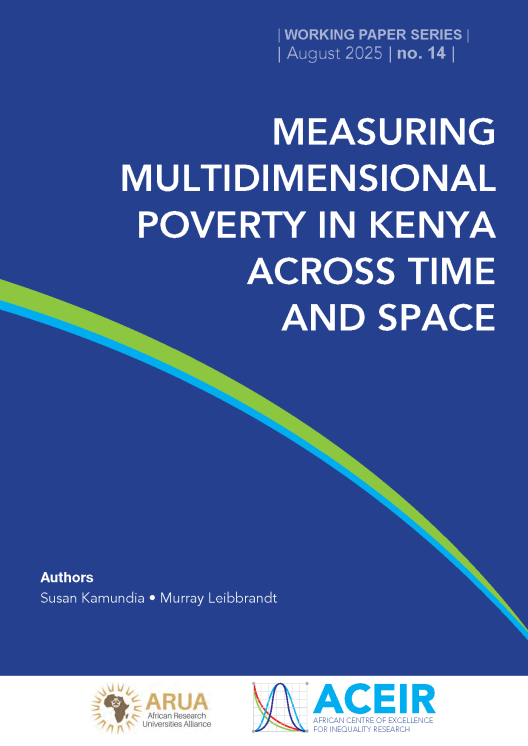Measuring multidimensional poverty in Kenya across time and space
Susan Kamundia, Murray Leibbrandt
ACEIR working paper no. 14, August 2025.
Also published as a SALDRU working paper.

This study aims to assess Kenya’s progress in the reduction of poverty in the context of achieving sustainable development goals (SDGs). The authors use a standard set of indicators from the Alkire-Foster (AF) multidimensional framework, which encompasses multiple facets of the SDGs, but begin by interrogating the appropriateness of these indicators. They first assess the reliability of the indicators using the item response theory, and the reliability of the overall model using McDonald’s Omega statistic. They find that the overall model is not reliable. In particular, they find that the child mortality indicator is not reliable and thus drop it from the analysis. The authors introduce indicators measuring child schooling gaps, household overcrowding, and financial inclusion, which make the poverty measurement model reliable. They assess the validity of the AF framework by using the confirmatory factor analysis and find that the most valid model is one with equal non-normalised weighting of the indicators, which exclude the child mortality indicator. This is in contrast to the standard AF framework, which uses equal weights per domain and equal weights for the dimensions within each domain. The researchers thus estimate the multidimensional model AF framework with additional indicators, with equal weights and without the child mortality indicator.
By using the finite mixture model, latent class analysis, and negative binomial frameworks to estimate an optimal poverty threshold, the study finds that the negative binomial framework fits the data best. The optimal threshold classifies an individual as 'poor' if they are deprived in seven or more of the 12 indicators. In contrast, the standard AF framework considers an individual as poor if they are deprived of a third or more of the weighted indicators. Using their index, the authors then profile multidimensional poverty over the period 2014 to 2022. The results show that Kenya has experienced remarkable improvements in the poverty situation based on significant reductions in the poverty headcount and multidimensional poverty index (MPI) at the national, sub-group and spatial levels between 2014 and 2022. A decomposition of the MPI shows that the largest contributor to multidimensional poverty is the living standards dimension, while the education dimension makes the least contribution. The provision of cheaper clean cooking fuel, electricity, and low-cost housing is imperative since the lack of access to these indicators is the largest contributor to the MPI. Read more
